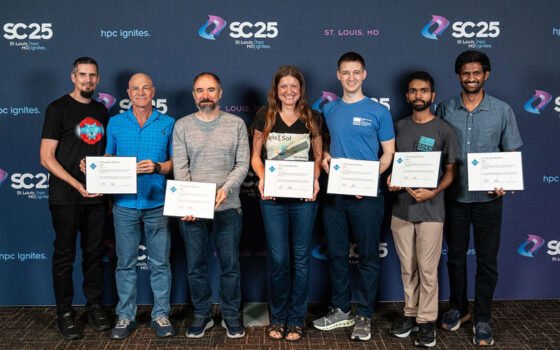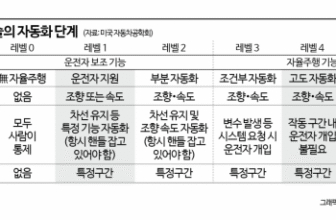A team of researchers from The University of Texas at Austin (UT), Lawrence Livermore National Laboratory (LLNL), and Scripps Institution of Oceanography at UC San Diego has won the 2025 Association for Computing Machinery (ACM) Gordon Bell Prize for its work on real-time tsunami forecasting.
The team developed a real-time tsunami forecasting system using an advanced “digital twin” framework that reduces what would normally require 50 years of supercomputing time to less than a second. This has the potential to dramatically improve early warning systems for coastal communities near earthquake and tsunami-prone regions.
The team applied the forecast on the seismically hazardous Cascadia subduction zone of the Pacific Northwest – an area that spans 700 miles from Northern California to British Columbia, Canada. The last major Cascadia earthquake was in 1700, and seismologists have estimated a 37% probability of a magnitude 8.0 or higher earthquake in the next 50 years.
“Using the largest supercomputers in the world, we developed new algorithms using seafloor sensors to forecast tsunami wave heights and their uncertainties in fractions of a second, 10 billion times faster than conventional algorithms,” said Scripps Oceanography seismologist and team member Alice Gabriel. “Our work shows that physics-based models of earthquakes and tsunami generation are now fast enough to guide real-time response, which not only improves early warning for the Pacific Northwest, but also points the way toward global, physics-based earthquake and tsunami early-warning systems.”
Often referred to as the Nobel Prize of supercomputing, the Gordon Bell Prize, awarded at the annual Supercomputing Conference (SC25) on Nov. 20, rewards innovation in high performance computing (HPC) applications in science, engineering, and large-scale data analytics.
“It’s a tremendous honor for our team to receive this highest recognition in the field of supercomputing,” said Omar Ghattas, Professor of mechanical engineering and principal faculty in the Oden Institute for Computational Engineering and Sciences at UT, and senior author of the research.
The method uses seafloor pressure data in the subduction zone, along with 3D coupled acoustic–gravity wave equations, to infer earthquake-induced seafloor motion using novel Bayesian inversion algorithms. The motion then provides a source for computers to simulate the travel of a tsunami toward coastlines and issue forecasts of wave heights at specified locations. The sequence executes in a fraction of a second, providing actionable early warning to inform first responders ahead of tsunamis, which can arrive on coastlines in as little as 15 minutes following an earthquake. The team’s digital twin framework achieves a 10-billion-fold speedup over current state-of-the-art methods.
A digital twin is a computational replica of the real geophysical system that combines physics-based models with observations in real time to estimate its evolving state and explore plausible futures.
“The biggest technical challenge in creating the Cascadia digital twin was the enormous problem size combined with the need for providing forecasts in real time,” said Stefan Henneking, Research Associate at the Oden Institute and the first author. “Overcoming this challenge required novel parallel inversion algorithms, advanced numerical discretization libraries, and exploitation of leading-edge GPU supercomputers.”
In addition to Gabriel, Ghattas and Henneking, members of the research team include Sreeram Venkat and Milinda Fernando of UT’s Oden Institute; and Veselin Dobrev, John Camier, and Tzanio Kolev of LLNL.
The team’s work utilized some of the world’s most powerful supercomputers, including LLNL’s top-ranked El Capitan, the National Energy Research Scientific Computing Center’s Perlmutter, the Swiss National Supercomputing Center’s Alps, and the Texas Advanced Computing Center’s Frontera.
“By combining the power of El Capitan with advanced high-order finite element algorithms, we were able to solve problems with an unprecedented 50+ trillion unknowns on 40K+ GPUs, while maintaining excellent parallel efficiency,” said LLNL Computational Mathematician Tzanio Kolev. “This work builds on years of GPU algorithmic research by the MFEM team, and it was great to see the resulting performance on the world’s most powerful HPC system.”
Applications could enable early warning systems in many other fields anticipating events ranging from wildfires, seismic ground motion and storm surge to space weather and threat detection.
The Gordon Bell Prize-winning research, “Real-Time Bayesian Inference at Extreme Scale: A Digital Twin for Tsunami Early Warning Applied to the Cascadia Subduction Zone,” was published Nov. 15 as part of the SC25 Conference Proceedings. In addition to the Gordon Bell Prize, the team received two other awards at SC25: the Hyperion Research HPC Innovation Excellence Award and the HPCWire Reader’s Choice Award for Best Use of HPC in Physical Sciences.
Awarded annually, the ACM Gordon Bell Prize honors outstanding achievements in HPC applications. The award is named after the pioneering computer architect who founded the U.S. National Science Foundation’s Directorate for Computer and Information Science and Engineering.









